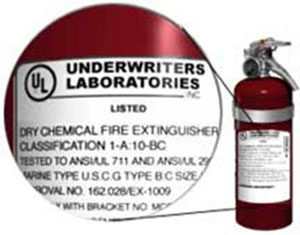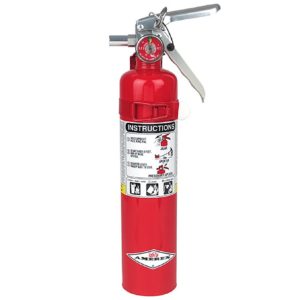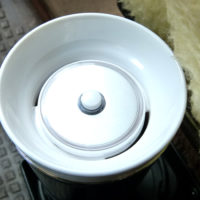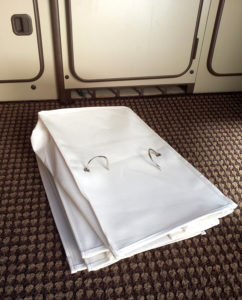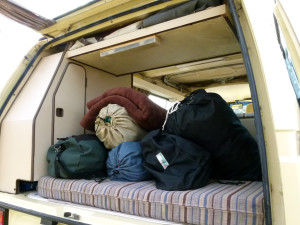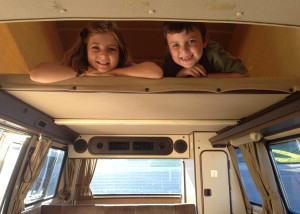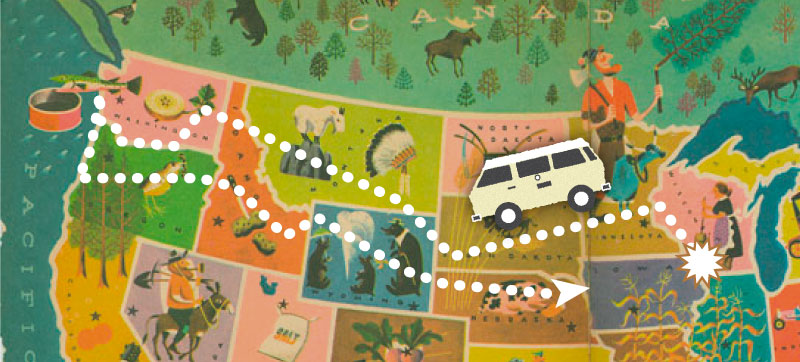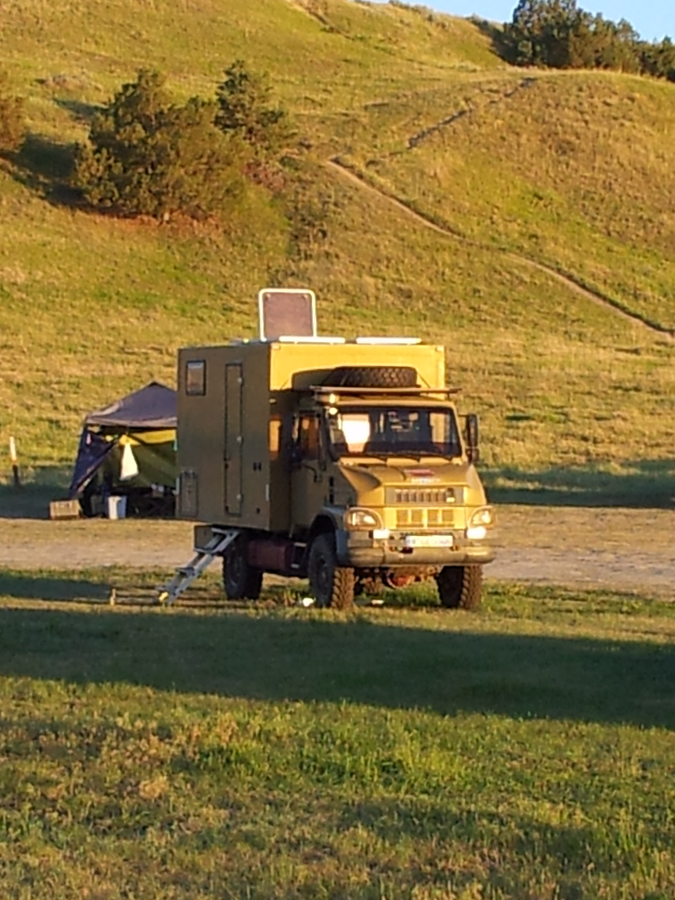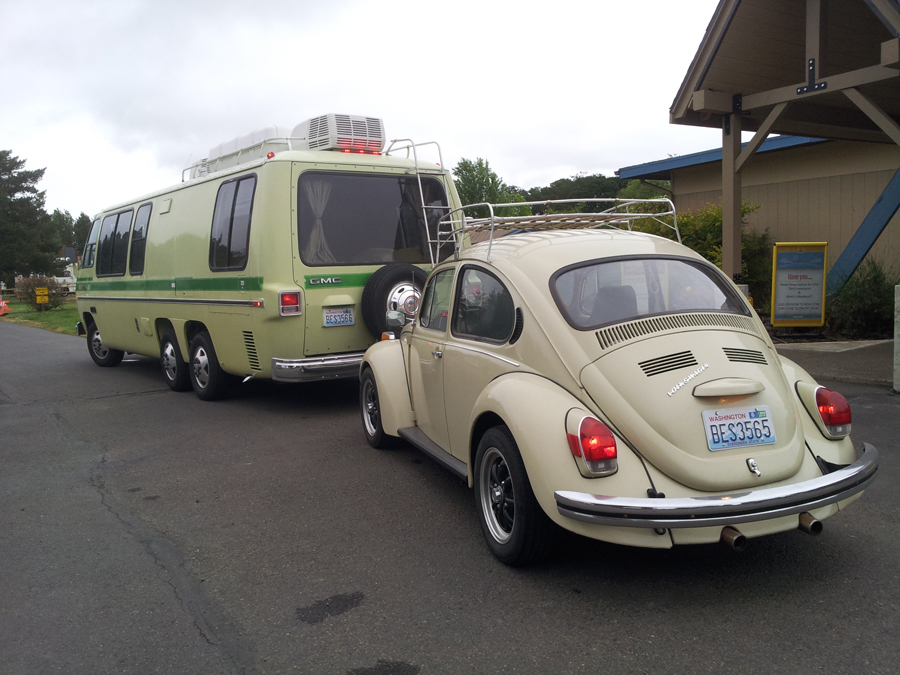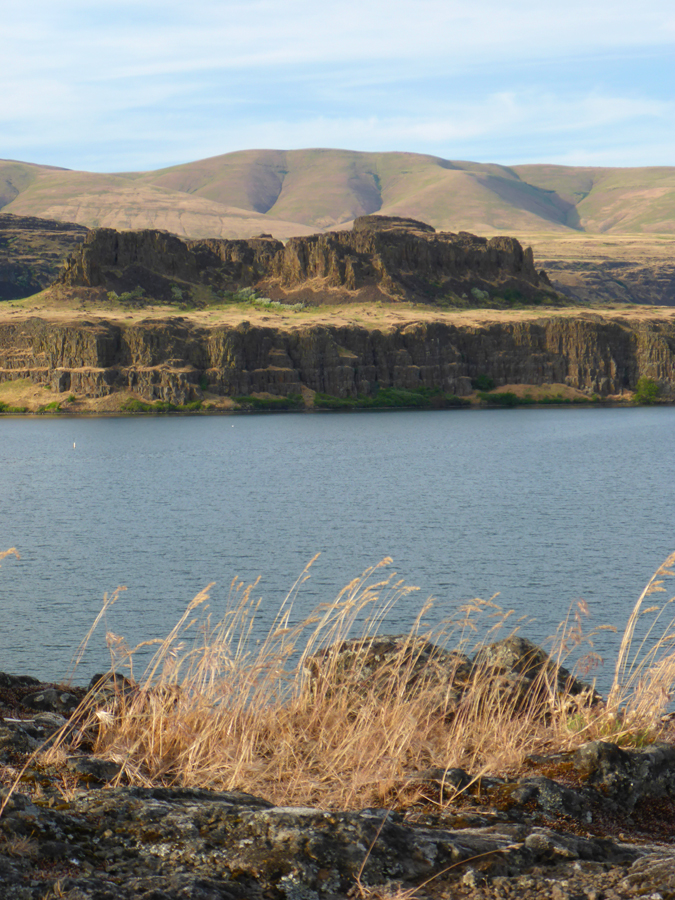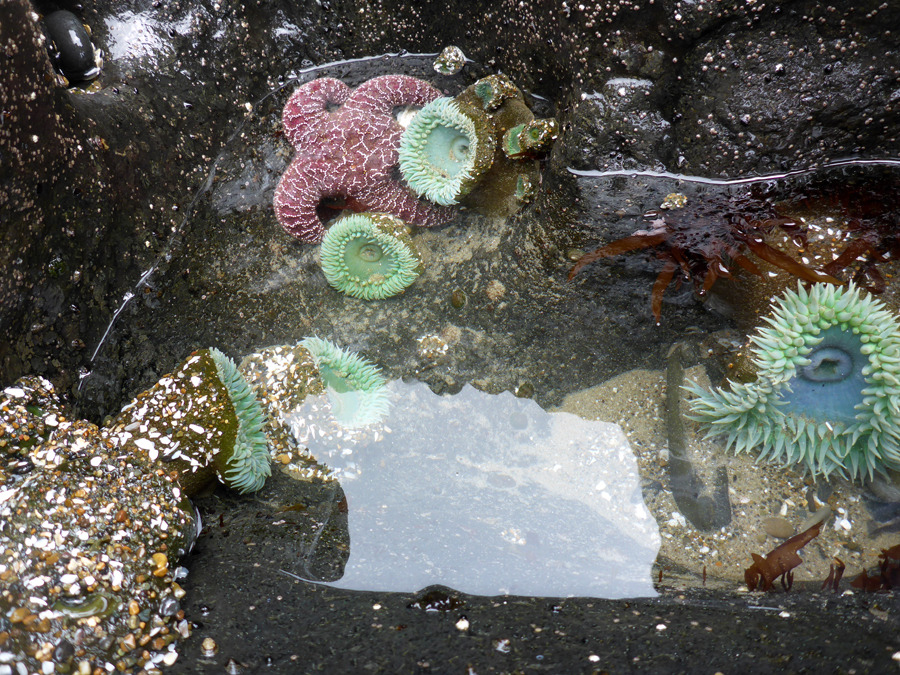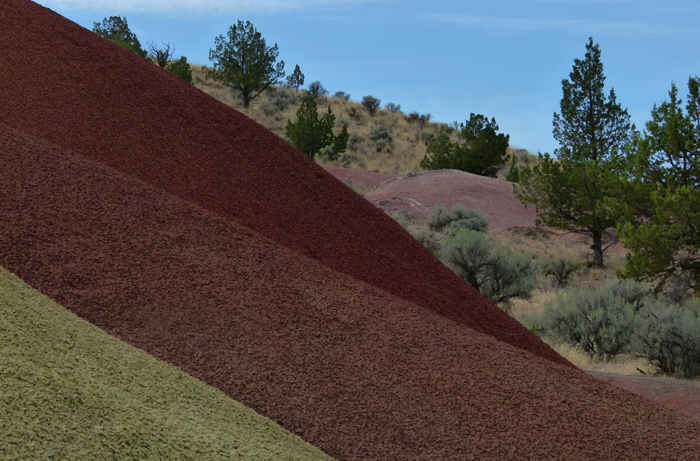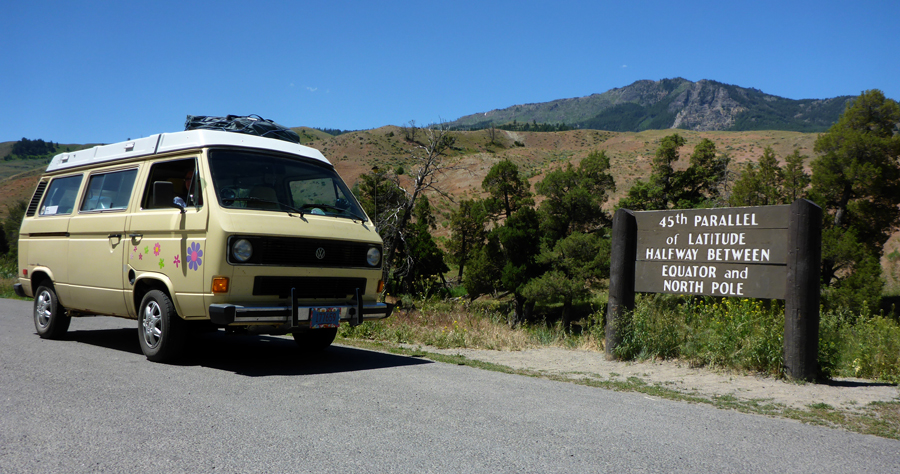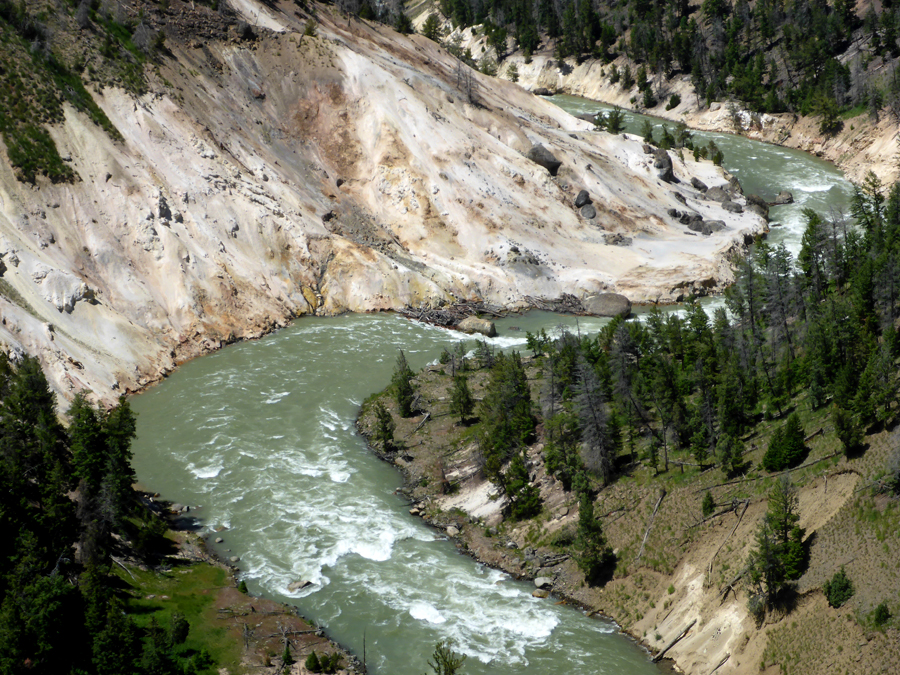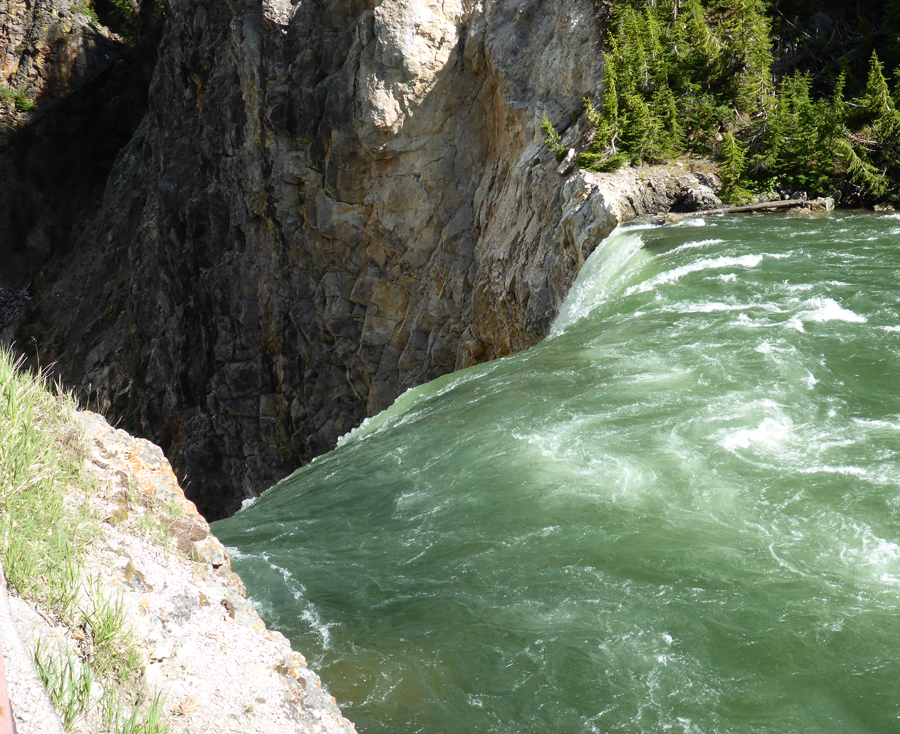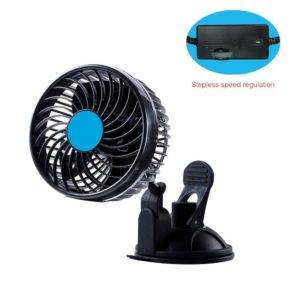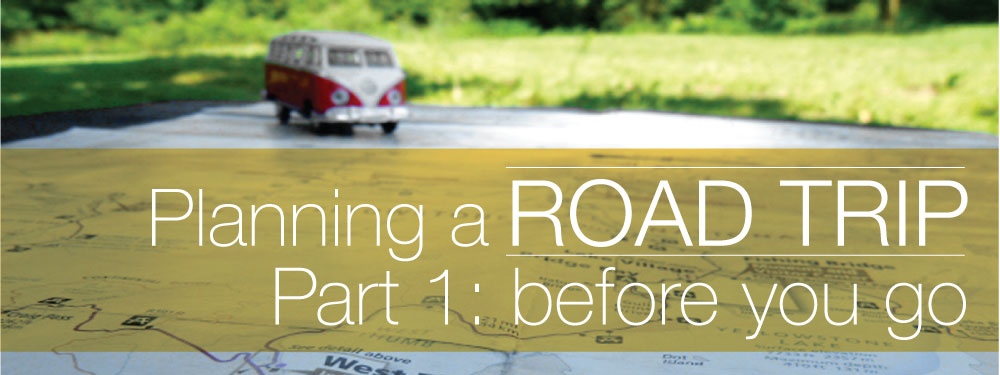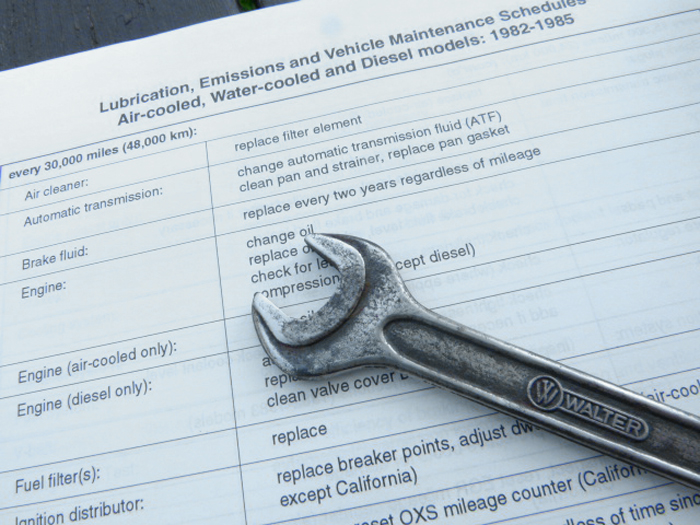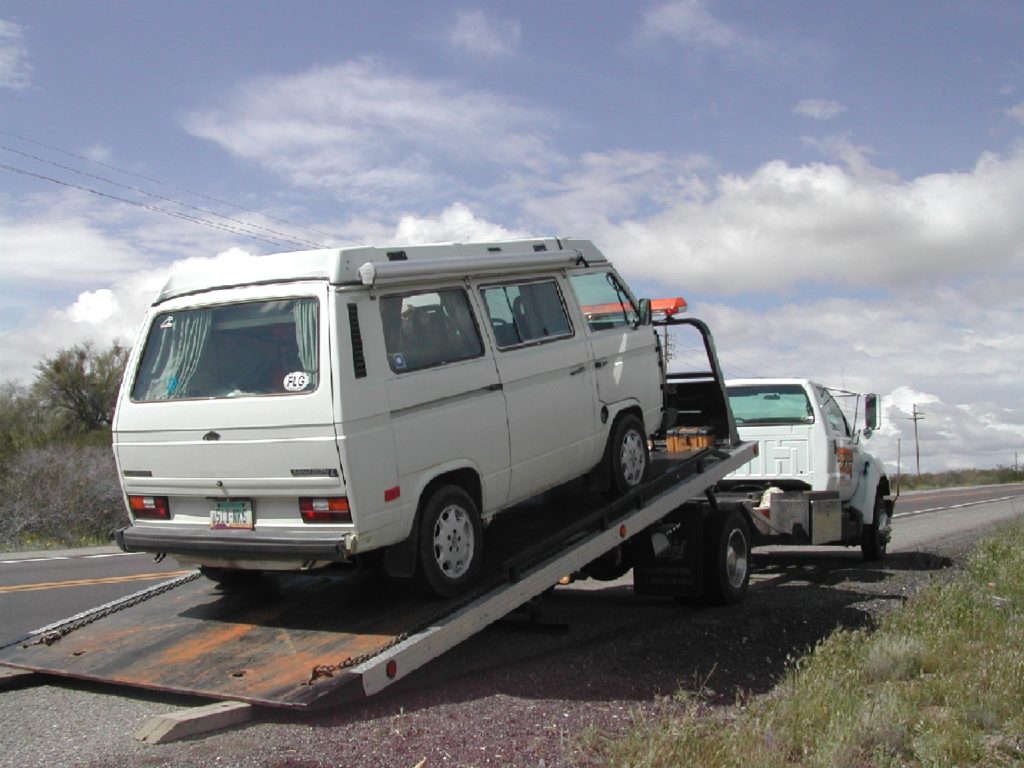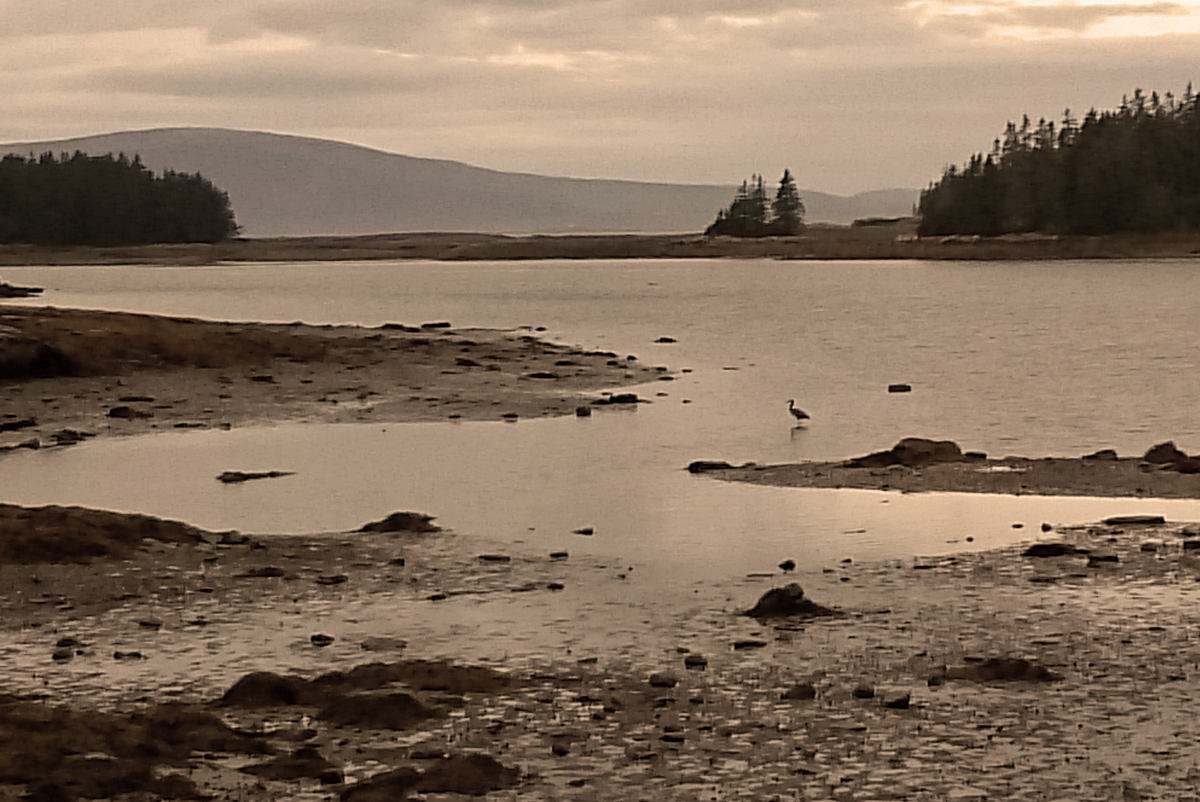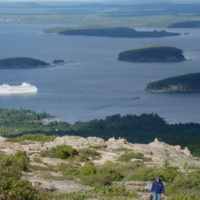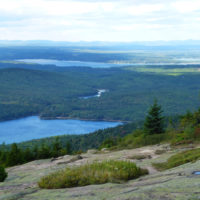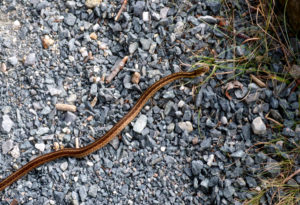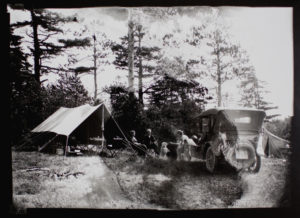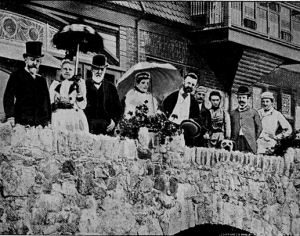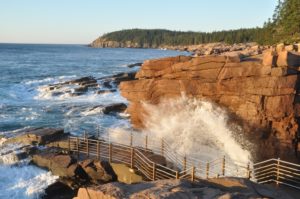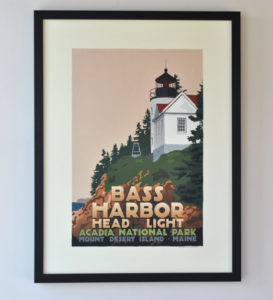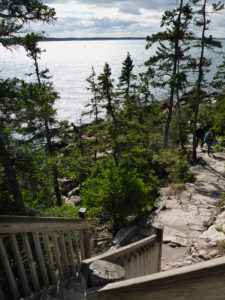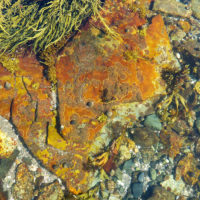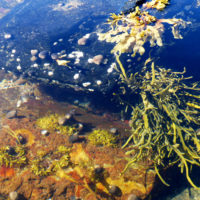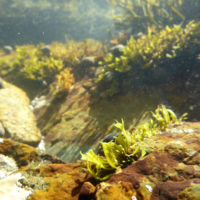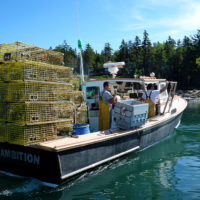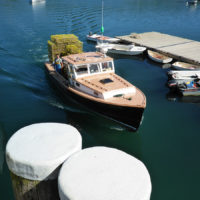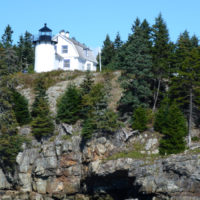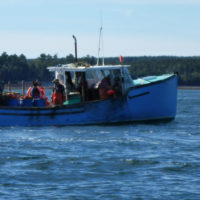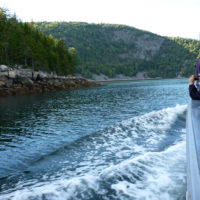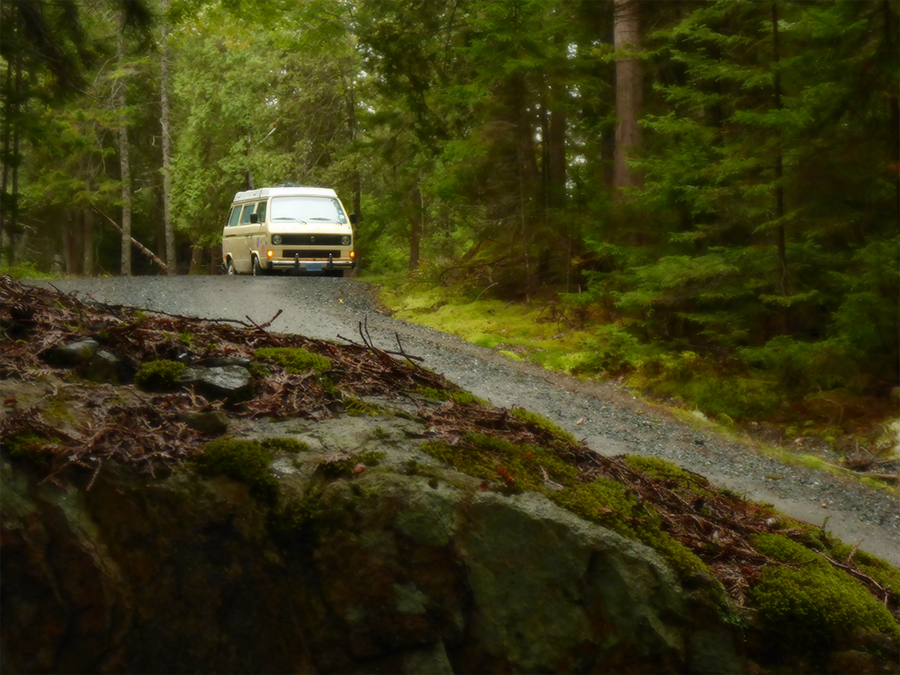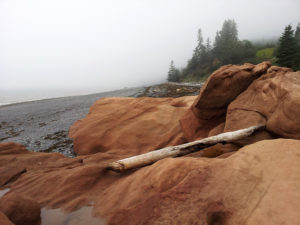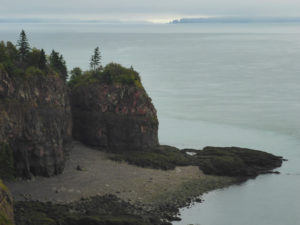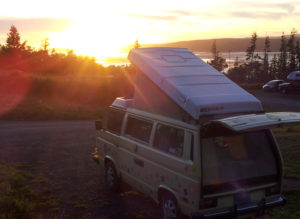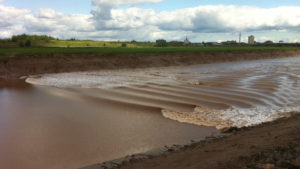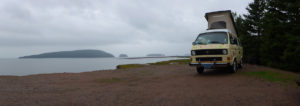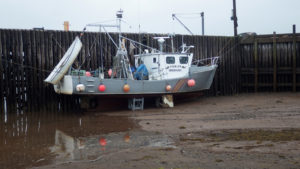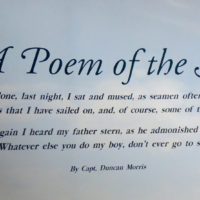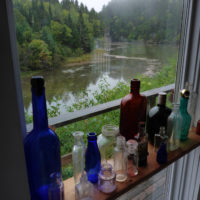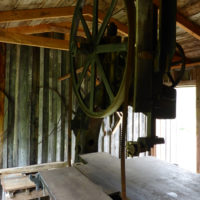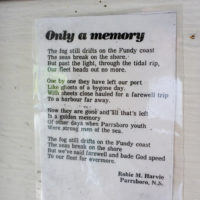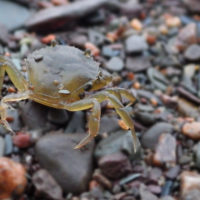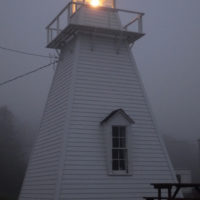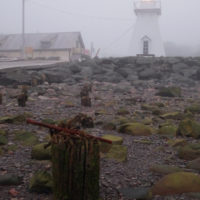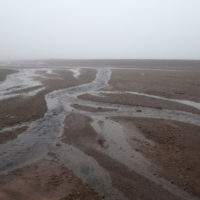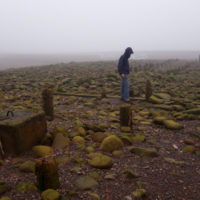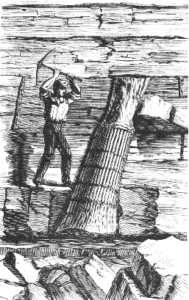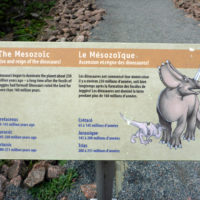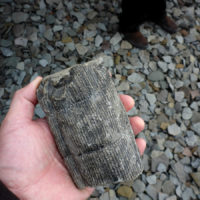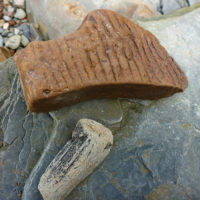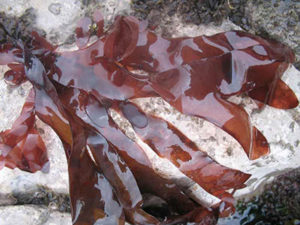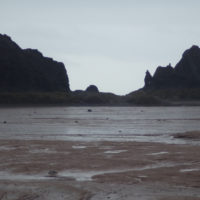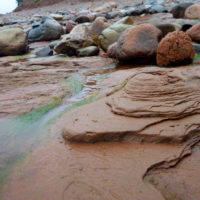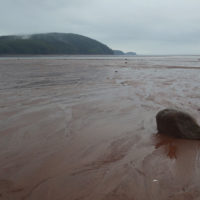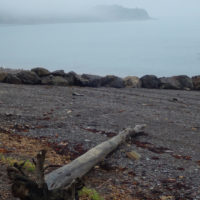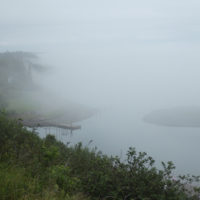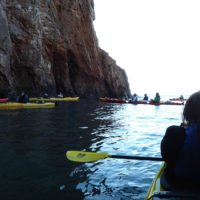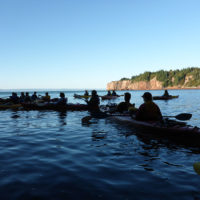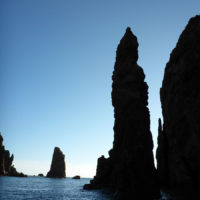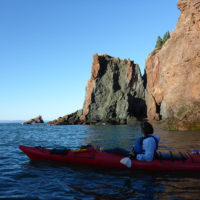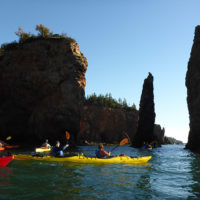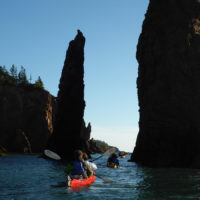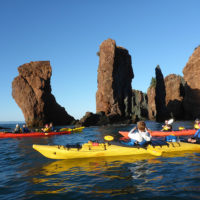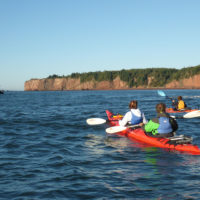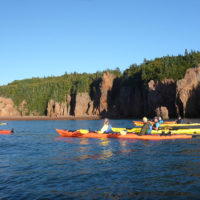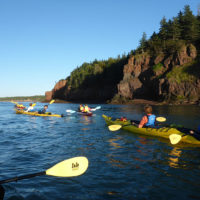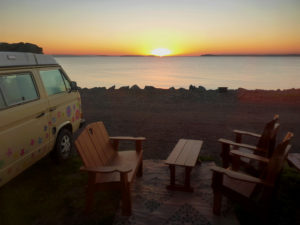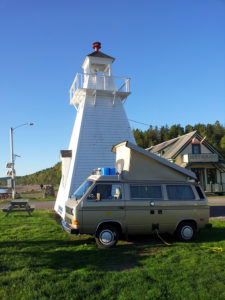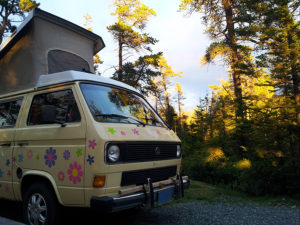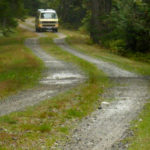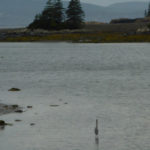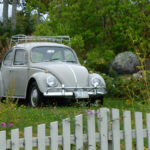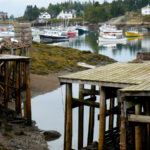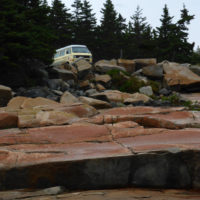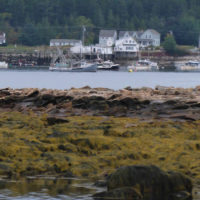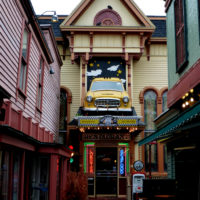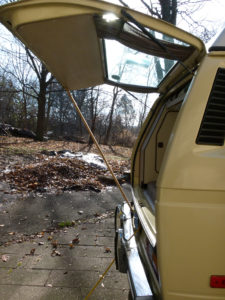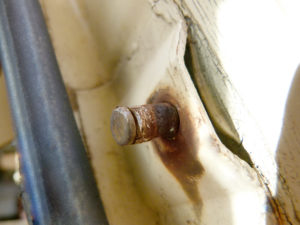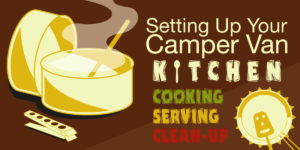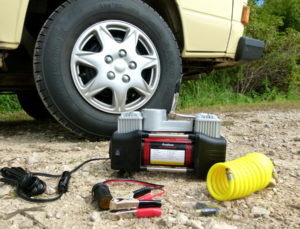How to Choose (and Hopefully Never Use) a Fire Extinguisher in Your Camper Van
NOTE: SAFETY RECALL
“Kidde Recalls Fire Extinguishers with Plastic Handles Due to Failure to Discharge and Nozzle Detachment”
Hazard: Certain Kidde fire extinguishers can become clogged or require excessive force to discharge and can fail to activate during a fire emergency. In addition, the nozzle can detach with enough force to pose an impact hazard.
Learn how to identify whether your extinguisher is included in this recall, and more, here:
A few hours into a recent month-long Westfalia road trip, we came upon a nicely restored classic 1960’s sedan pulled over on the side of the road, hood up and smoke rolling from the open engine compartment.
 I stopped hard on the shoulder a safe distance back, grabbed our fire extinguisher as I went out the sliding door, and rushed ahead to find the owner peering into the open engine compartment.
I stopped hard on the shoulder a safe distance back, grabbed our fire extinguisher as I went out the sliding door, and rushed ahead to find the owner peering into the open engine compartment.
“I think I’ve got it …” he announced, having just emptied his economy-sized extinguisher. But a moment later sparks erupted again and the carburetor was engulfed in flames. I quickly handed him my larger, fresh extinguisher and he put it out for good.
I sometimes wonder what would have happened if we had come along just five minutes later, or if our extinguisher was old and expired. And of course it really got me thinking about my own fire-response equipment for my family.
And for my beloved Westfalia, which is in fact like another member of the family …
Overview
Small handheld extinguishers are available in a variety of types and sizes, each designed for a particular purpose, specified by a series of numbers & letter designations. Fortunately, you can use these numbers to choose an extinguisher for your VW Westfalia, camper van, or other small RV.
What do the letters and numbers on the fire extinguisher mean?
Fire extinguishers are marked with at least one of the following classification letters on the label: A, B, C, D, or K; and a number ranging from 1 to 120.
The letters indicate the types of fire the extinguisher is designed for:
- Class A is designed for fighting fires involving common combustibles like paper, fiberglass, wood, 12-volt wiring and many other items typically found in a home, auto, RV, or boat.
- Class B is effective for extinguishing fires involving flammable & combustible liquids such as gasoline and diesel fuel, as well as flammable gasses like propane.
- Class C should be used for fires involving energized 120-volt electrical equipment such as shore power, and including wiring, circuit breakers, machinery and appliances. The only sure way to extinguish a Class C (electrical) fire is to turn the power Off. The C designation indicates that the extinguisher material is non-conductive.
- Class D is effective in extinguishing fires involving combustible metals like magnesium, sodium, potassium, sodium-potassium alloy uranium and powdered aluminum.
- Class K is designed for putting out fires involving kitchen and cooking grease.
The numbers on the label represent the area the extinguisher will cover:
- Class A is measured in cubic feet (where 1A equals 8 cubic feet).
- Class B is measured in square feet (where 10B equals 10 square feet).
- Class C has no area measurement.
Generally speaking, a small RV or camper van like a VW Westfalia may experience a fire requiring Classes A, B, C, or K.
Types of Fire Extinguishers
Fire extinguishers best suited for use in RVs use a variety of chemical agents:
Perhaps the most common type of extinguisher, the material used in these is Monoammonium Phosphate, which is a toxic Hazardous Material. These extinguishers have limited ability to extinguish Class A fires (common combustibles, paper, fiberglass, wood, 12v wiring and most of the materials used in RVs or boats), so it often requires a larger ABC extinguisher to extinguish a relatively small Class A fire.
This chemical agent becomes very corrosive when heated, and is very difficult to clean up because it adheres to the surfaces it comes in contact with. The aftermath of an interior or engine fire will require immediate and extensive cleanup. In storage, the powder tends to become compacted in the bottom of the cylinder over time (especially when carried in a vehicle), perhaps rendering it useless when needed. They can also can lose their pressure over time, though some can be recharged by a local fire-safety service.
Pros: common; affordable;
Cons: can lose their pressure over time; the powder tends to become compacted in the bottom of the cylinder over time; limited ability to combat Class A fires;
BC Dry Powder
The agent used in this type of extinguisher is non-toxic Sodium Bicarbonate. As the Class designation indicates, this type is suitable for combatting fires involving flammable liquids and gasses, and 120-volt electrical fires.
Pros: common; affordable;
Cons: can lose their pressure over time; the powder tends to become compacted in the bottom of the cylinder over time;
A BC Halotron I Clean Agent Gas
BC Halotron I Clean Agent Gas
Halotron is a clean, non-conductive gaseous agent suitable for use on Class B and C fires; larger units can also be used on Class A fires. Though much more expensive than dry extinguishers, Halotron extinguishers leave no residue after discharge so there’s no toxic cleanup, the cost of which would easily exceed that of the extinguisher. Unlike powder and dry chemical extinguishers, Halotron does not compact in the cylinder, though they can lose pressure over time and may need to be periodically refilled.
Pros: clean; non-toxic; does not compact;
Cons: can lose pressure over time; more expensive; larger capacity required for Class A use;
 ACK Potassium Lactate & Nitrogen Gas Aerosol
ACK Potassium Lactate & Nitrogen Gas Aerosol
This type of compact extinguisher works on household fires including those involving paper, fabric, wood, cooking oils, electrical appliances and equipment.
One brand, First Alert Tundra, claims this type of extinguisher, “… discharges four times longer than regular extinguishers, making it ideal for fighting common household fires and allowing you to ensure the fire is completely out. The nozzle sprays a wide area, giving you greater control to put out a fire faster. … The portable extinguisher spray is ideal for the kitchen, boats, RVs, and travel. The biodegradable formula of this foam fire extinguisher spray wipes away with a damp cloth for easy cleanup.”
Pros: compact; affordable; effective on multiple types of fires including cooking oils; longer discharge time; clean; non-toxic;
Cons: small size may not be sufficient for larger fires;
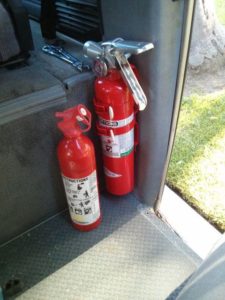 Size Matters
Size Matters
I will never forget the expression of despair and helplessness of the unfortunate motorist mentioned above whose compact extinguisher petered out with his engine still ablaze. Nor the look of relief and hope when I stepped forward and handed him my larger, fresh extinguisher …
After choosing the correct type of extinguisher, the next most important aspect is sufficient volume. And when it comes to the safety of your family, and your beloved camper van and belongings, well, more is better.
As mentioned above, the rated capacity of an extinguisher is indicated by the number, in square or cubic feet, depending on the Type. The stock extinguisher which came with most Westfalia Campers was a compact 5-B:C, but this may be barely adequate for a medium-sized fire, and a larger unit will provide better protection.
In general, select the largest extinguisher your space and budget allow, weighed against the value you place on your family and vehicle.
 Choosing and Packing
Choosing and Packing
For most fires found in a small RV like a camper van, the ABC Halotron I extinguisher is perhaps the most effective, as it will suppress most types of blazes and will not damage your camper’s interior with toxic and corrosive agents. A unit containing 2.5 lbs of agent may be sufficient, though a 5-lb. unit can be had for only a few dollars more.
As a backup, add a couple of compact and affordable ACK Potassium Lactate & Nitrogen Gas Aerosol extinguishers, distributed throughout your van so one is always close at hand. Note that this is the only type specifically rated for cooking oil & grease fires, so keep one near the kitchen or camp stove.
 The National Fire Protection Association recommends your primary extinguisher be located within 24 inches of the main exit of an RV, and the stock Westfalia location on the lower part of the B pillar certainly meets this recommendation. Another suitable spot may be beneath the rear bench seat, on the passenger side, though accessing the extinguisher here may be hampered by child seats or other luggage on the seat.
The National Fire Protection Association recommends your primary extinguisher be located within 24 inches of the main exit of an RV, and the stock Westfalia location on the lower part of the B pillar certainly meets this recommendation. Another suitable spot may be beneath the rear bench seat, on the passenger side, though accessing the extinguisher here may be hampered by child seats or other luggage on the seat.
Most medium-sized extinguishers include a mounting bracket of some sort, usually to attach the extinguisher to a wall. If your new extinguisher does not fit in the stock Westfalia bracket, remove it and install the included bracket according to the instructions. Simply set the new bracket in your intended spot, mark the locations of the screws, and drill 2-3 pilot holes for the mounting screws.
When you need a fire extinguisher, you need it fast, so make sure the extinguisher can be quickly and easily removed from the bracket in an emergency. Do not allow your extinguishers to merely roll around loosely in your vehicle; they can become a dangerous projectile in an accident, or can be damaged beyond use by jostling. Keep extinguishers close at hand; if they are buried away beneath bulky luggage or heavy tools, the delay in retrieving it may render it useless.
Just as at home, your first line of defense against a devastating fire is awareness, so install a smoke alarm in your camper van, too.
 Using an Extinguisher
Using an Extinguisher
Should you ever find yourself in urgent need of a fire extinguisher, you’ll want to make the most of what precious little suppressant you have by deploying it for maximum effectiveness.
Firefighting professionals recommend the P.A.S.S. technique for best use of an extinguisher:
P: Pull the pin. The pin prevents accidental discharge, but must be removed to use the extinguisher
A: Aim low at the base of the fire, where the fuel source is.
S: Squeeze the lever above the handle. Release to stop the flow. Note that some extinguishers have a button instead of a lever.
S: Sweep from side to side at the base of the fire, until all flames are extinguished. Watch the area. If the fire re-ignites, repeat steps 2 – 4.
 Don’t make the common mistake of aiming the extinguisher directly at the main body of the flames, as this will be far less effective than aiming at the base of the flames.
Don’t make the common mistake of aiming the extinguisher directly at the main body of the flames, as this will be far less effective than aiming at the base of the flames.
Engine fires are a particularly dangerous and catastrophic type of blaze, because of the presence of fuel, electrical batteries and wiring, and rubber and plastics. Worse, because the engine is hidden away inside the Bus, Vanagon, or large RV, often in the rear, you may not even notice an engine fire until it is well underway.
First, avoid opening the upper engine cover or lid. Doing so will quickly allow fresh air in to feed the fire, and allow flames to escape and ignite the camper interior.
Instead, keep the engine fire contained to help suffocate the flames, and aim your extinguisher at the lowest flames from beneath the vehicle while maintaining a safe distance. If the fire is not too large and hot, you can even carefully open the license-plate access panel and aim your extinguisher in here, remembering to sweep from side to side at the base of the fire.
 Even after the fire is out, keep an eye on the long fuel lines which run the length of the vehicle to the fuel tank, to make sure they are not burning.
Even after the fire is out, keep an eye on the long fuel lines which run the length of the vehicle to the fuel tank, to make sure they are not burning.
You may also consider something like the BlazeCut Automatic Fire Suppression System, which mounts permanently inside your van’s engine compartment to automatically release extinguishing agent in case of an engine fire.
All adults in your camper van should know where the extinguishers are located, and should periodically practice quickly grabbing an extinguisher and preparing to use it. Kids, even if they’re not charged with using extinguishers, should at least know where they are and how to retrieve them for an adult in an emergency. The entire family should exercise how to quickly and smoothly exit the vehicle, staying a safe distance away from the vehicle and surrounding traffic.
Care and Maintenance
Inspect the extinguishers in your camper van twice a year during your Spring and Fall maintenance, and before each long trip:
- Be sure the extinguisher is accessible, and not blocked by coolers, luggage, or other cargo that could hinder access in an emergency.
 Check the integrated pressure gauge to ensure it is at the recommended level; the needle should be in the green zone – not too high and not too low.
Check the integrated pressure gauge to ensure it is at the recommended level; the needle should be in the green zone – not too high and not too low.- Ensure that the nozzle or other parts are not obstructed by dirt or debris, and that the pin and tamper seal (if it has one) are intact.
- Check the main body for dents, leaks, rust, chemical deposits and/or other signs of abuse/wear.
- The active agent in dry powder extinguishers has a tendency to compact in the bottom of the cylinder over time, so this type of extinguisher should be periodically removed from its mounting bracket, inverted, and rapped sharply with a plastic mallet or a heavy block of wood, then shaken up and down, to loosen the compacted powder.
- Look for any expiration dates on your extinguishers and replace any that are too old. If in doubt, take them to a Fire Extinguisher Service center for inspection or refilling.
Finally …
Knowing how to select and use an appropriate fire extinguisher can protect your family and your prized vehicle from damage, or worse …
Safe travels!
Additional Resources:
“RV fire extinguisher use and maintenance”
https://www.rvrepairclub.com/article/rv-fire-extinguisher-use-maintenance/#
“What kind of fire extinguisher would be most useful in a RV situation?”
http://www.h3rperformance.com/support_faq_4.htm
“Fire Extinguisher Maintenance and Inspection”
https://www.nachi.org/fire-extinguisher-maintenance-inspection.htm


